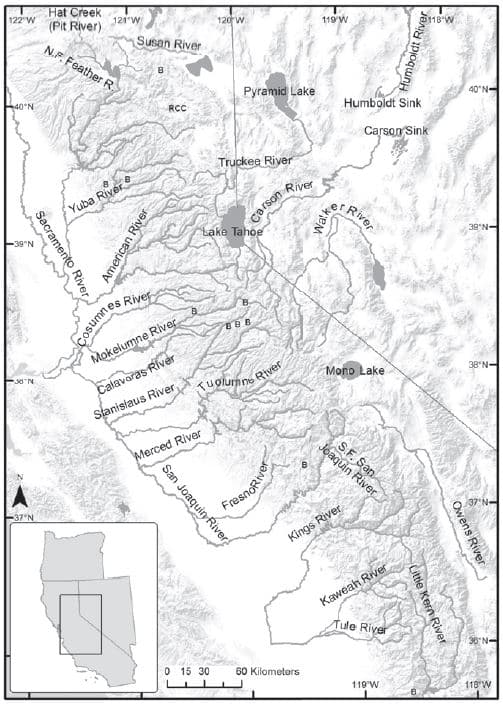The Historic Range of Beaver in the Sierra Nevada
The OAEC WATER Institute and fellow beaver advocates publish papers on historic evidence of beaver in the Sierra Nevada.
After years of research and collaboration beaver advocates from the California Beaver Working Group have published two papers in the California Fish and Game Journal, a major peer-reviewed scientific publication.
Beaver Historical Range in the Sierra PDF (Co-Author: Brock Dolman)
Beaver Physical Evidence in the Sierra PDF
Beaver Historical Range in the Coast PDF
Summary
After years of research and collaboration beaver advocates from the California Beaver Working Group have published two papers in the California Fish and Game Journal, a major peer-reviewed scientific publication.
The first paper (James and Lanman 2012 ) brings to light the buried beaver dam wood that was dug up in Sierra’s in the late 80’s and carbon dated to 580, 1730 and 1850 A.D. This is significant because it serves as scientific proof that beaver occurred in the Sierras before European settlers arrived. This refutes’ California Fish and Wildlife’s long held belief that beaver are not native to the Sierras above 1000 feet in elevation. This erroneous belief was based on a reports issued in 1937 and 1942, back when there were few beaver left and no modern means to verify their historic presence.
The second paper (Lanman et al. 2012), which WATER Institute’s Brock Dolman co-authored, lists several forms of historic evidence (including the buried dam wood) that further prove that beaver were in fact native to the Sierra.
Getting both of these accepted and published is a major achievment. Having this information published by the very entity whose policies we are hoping to change can only help us in our efforts to support the California Department of Fish and Game in considering non-lethal management strategies for managing beaver in the Sierras. It legitimizes our efforts to protect populations in the Sierras and, where appropriate, relocate beaver to those areas to help restore high mountain meadows, wetlands, increase drought preparedness and ensure greater summer water supply in an era of decreasing Sierra snow pack.
Next we will focus our efforts on writing and submitting a paper to re-evaluate the historic evidence of beaver in the coast of California south of the Klamath River, the San Francisco Bay Area and all of Southern California as beaver were also deemed not native to these areas in the Status of Beaver reports.






